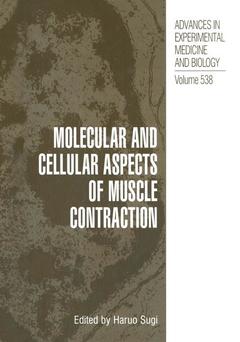This volume presents the proceedings of a muscle symposium, which was supported by the grant from the Fujihara Foundation of Science to be held as the Fourth Fujihara Seminar on October 28 -November 1, 2002, at Hakone, Japan. The Fujihara Seminar covers all fields of natural science, while only one proposal is granted every year. It is therefore a great honor for me to be able to organize this meeting. Before this symposium, I have organized muscle symposia five times, and published the proceedings: " Cross-bridge Mechanism in Muscle Contraction (University of Tokyo Press, 1978), "Contractile Mechanisms in Muscle" (plenum, 1984); "Molecular Mechanisms of Muscle Contraction" (plenum, 1988); "Mechanism of MyofIlament Sliding in Muscle contraction" (plenum, 1993); "Mechanisms of Work Production and Work Absorption in Muscle" (plenum, 1998). As with these proceedings, this volume contains records of discussions made not only after each presentation but also during the periods of General Discussion, in order that general readers may properly evaluate each presentation and the up-to-date situation of this research field. It was my great pleasure to have Dr. Hugh Huxley, a principal discoverer of the sliding fIlament mechanism in muscle contraction, in this meeting. On my request, Dr. Huxley kindly gave a special lecture on his monumental discovery of myofIlament-lattice structure by X-ray diffraction of living skeletal muscle. I hope general readers to learn how a breakthrough in a specific research field can be achieved.




